Ali Ferguson is a textile artist who works from her studio in Roslin. In The Purple Thread Shed she designs and produces contemporary stitched textile art for sale, exhibition and commission. Recently she has turned her attention to wooden art and wearables.
We were attracted to Ali’s work because of the balance she achieves between originality and commerciality. In our interview with the artist, she tells us why objects with a history often play a vital role in the creation of a new piece.
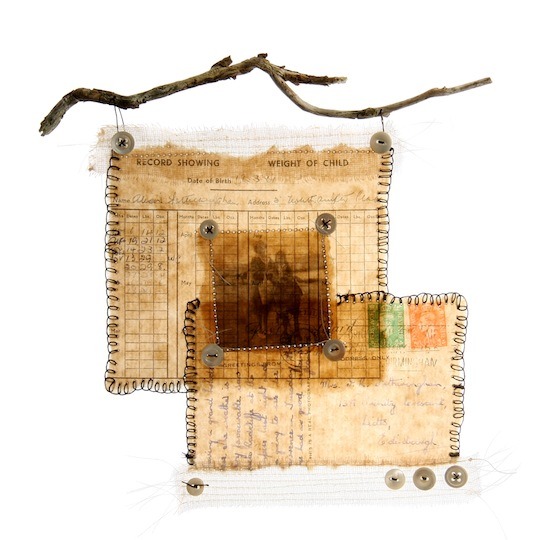
Making a mark with needle and thread
TextileArtist.org: What or who were your early influences and how has your life/upbringing influenced your work?
Ali Ferguson: Like many of the artists that you interview, I was greatly influenced by my mum. As a small child my time was spent round the table making things – anything & everything. My mum was brought up on a small croft in Aberdeenshire where everything was either made or bartered for and she was taught that if you wanted something you had to make it. She brought me up to knit and sew from an early age and most importantly to believe that I could pretty much make anything that I wanted. That belief certainly influences my work today.
What was your route to becoming an artist?
My love of embroidery and stitching led me at the age of seventeen to what was then The Scottish College Of Textiles and is now Herriot Watt University in the Scottish Borders where I gained my degree in Textile Design in 1982.
I married two weeks after graduating and started my family two years after that so I started my own knitwear business which I ran from home for many years. As my family grew older I decided to take a complete change of direction and started working creatively with family support projects in the community.
About five years ago I had a strong desire to get back into textiles and to be around like-minded people, so I did a number of courses at Edinburgh Art College and Edinburgh’s Telford College.
This launched me once more in a new direction. Despite my background in textiles, I feel that I am only just starting out as an artist!
What is your chosen medium and what are your techniques?
Although I would describe myself as a textile artist, I work with a variety of materials. I always incorporate hand stitch into my pieces and I think, for me, this is one of the most important elements. There is something very personal about making your own mark with needle and thread.
My choice of materials is influenced by my theme. For example a couple of years ago I was part of an exhibiting group who were working towards an exhibition entitled “Environment”. I chose to explore this by working with driftwood and exploring how I could stitch into it, stitch pieces of wood together and transfer photographic images onto it. This was the start of my “Environmentals” series of driftwood pieces. I am currently back working with wood as I am just starting a series of “Patchwood Quilts” or samplers made from bed slats. This is exciting me greatly and I have loads of further developments buzzing around my head at the moment.
As to techniques – let’s just say that these current pieces involve a great deal of drilling!
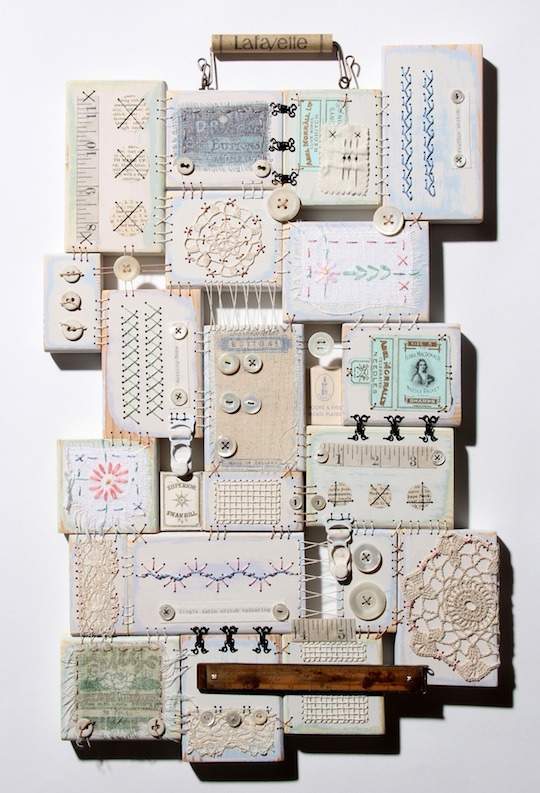
Exploring beyond the obvious
How would you describe your work and where do you think it fits within the sphere of contemporary art?
I always find this a hard question to answer. I don’t think I am very good with words and find it hard to explain myself. A journalist once suggested to me that maybe that’s why I create visual art – as my way of expressing myself.
So I think that is what my work is about; it’s just a way to express the thoughts that relentlessly go round my head. I am a bit of an over-thinker. Much of my art is based around family and home as this is what makes up most of my life experiences.
I also like to incorporate materials that bring their own stories such as old table linens, lace, vintage trimmings, thread and buttons. I print fabrics and papers from old letters and recipes and I use vintage fabrics that have been worn, washed and mended. I wonder about the lives that these things led before they came into my hands. Working with these conventional & unconventional materials, I build my pieces in layers – reflecting how our lives are a series of layers with everything that has gone before affecting everything that happens after.
I like to think that I am stitching stories where each final piece has several layers of meaning.
Tell us a bit about your process and what environment you like to work in?
My starting point for any piece of work is drawing a mind map to explore my thoughts. It’s an essential part of my design process and I always draw it on the back of an old envelope. Much the same as scribbling down ideas on the back of an old fag packet – so much less scary than a blank sketchbook page! I allow one thought to lead to another and I find it allows me to explore way beyond the obvious.
Something on my mind map will suggest materials to work with and techniques to explore. I will then start sampling and something in this process will suggest to me where I want to take the piece. I tend to work things out as I go along and allow pieces to grow organically – I don’t usually have my finished outcome in mind (let alone on paper) before I start.
I have a studio/shed at the bottom of my garden where I spend my days with our dog for company. I enjoy working on my own but hate silence; I always have radio 4 on in the background but seldom really listen to it!
Do you use a sketchbook?
Yes although it will rarely include any “sketches”. I use my sketchbook to record ideas and thoughts, experiments and processes. When I have too many ideas going on in my head I will jot them down on bits of paper and then when I have too many pieces of paper I will organise them into a sketchbook. This seems to be part of my creative process – the actual organising of all of these random “bits” that I have accumulated.
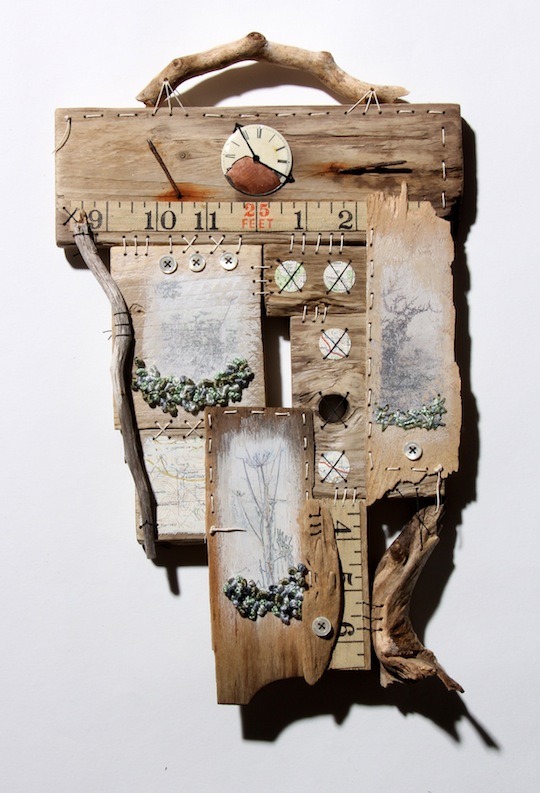
Finding authenticity and direction
What currently inspires you and which other artists do you admire and why?
I am inspired by the everyday – everyday people and everyday things.
While I admire many artists for their stunning work and expertise, those that bring a shiver of excitement to me tend to be artists who are exploring similar trains of thought to me.
Penny Leaver Green’s “Spine” and “Button Phobia” work fascinates me. Diane Savona’s “Domestic Archaeology” and “Fossil Garments” are simply stunning and Mandy Patullo’s “Memento Mori” and “Maiden’s Garlands” are hauntingly beautiful. Maria Walker’s “The Lightfoot Letters” are of particular interest as I have a small collection of letters that enthral me and I know that I will be using them one day and as I write this I have just been introduced by TextileArtist.org to the work of Sue Ferrari. Oh and I love simply everything by Matthew Harris.
Tell us about a piece of work you have fond memories of and why?
A few years ago I created a series of drawer shaped wall panels called “Women’s Lives” exploring my experiences as a wife and a mother. Why drawers? Because things get thrown into them, we don’t always know what is in there and it can be many years before we actually go through them and see what has accumulated when we have been looking the other way. These pieces remain special to me because I can look back and see that this was where I first started to find my authenticity and my own direction in my art.
The last drawer of this series is “The Underwear Drawer”. The Underwear drawer is the guardian of secrets & treasures – the life experiences that shape us into who we are. It stores memories of our transitions in life – growing up, leaving home, getting married, having babies, divorce, re-marriage. It exposes our vulnerabilities. The tissue paper underskirt is torn & mended several times over as we get hurt and mend. Some of these mends are discreet and some are more visible but they all add to our strength and our stories and help make us into who we are.
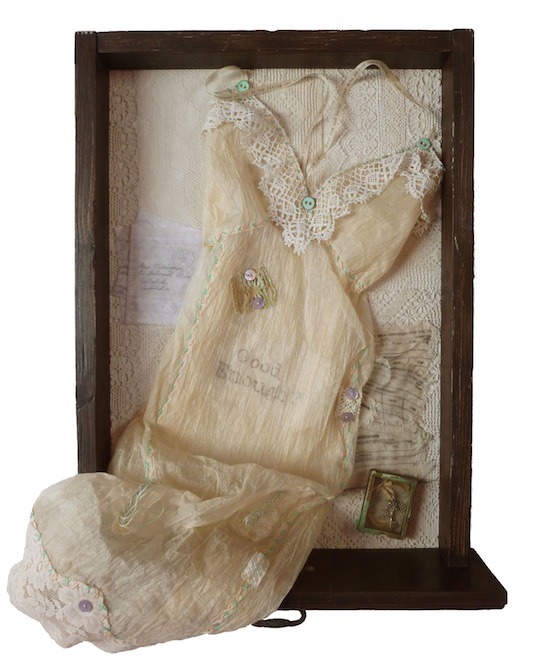
Inspired by story
How has your work developed since you began and how do you see it evolving in the future?
I really do consider myself to be still at the beginning stages. As to how I see my work evolving in the future – that is the exciting bit.
I am currently working on a range of wearables – jewellery and bags using old and interesting fabrics and materials. Again I am inspired by the story that these pieces carry with them. For example 1940s men’s shirt collars, Victorian boot buttons and other flea market treasures. I am looking at these to be my more commercial pieces.
In addition to this I will always have a “need” to be working on exhibition pieces. Currently I am at the very early stages of my “Patchwood Samplers” but I can already see me using these as a medium to explore more “family” based themes.
My big ambition for the future is to work collaboratively with textile artists that I admire. I would also love the challenge of exhibiting alongside some of my “textile crushes” – that would be just so hugely scary but amazing.
What are your favourite books for textile artists?
“[easyazon_link asin=”0500516456″ locale=”UK” new_window=”default” nofollow=”default” tag=”wwwtextileart-21″ add_to_cart=”default” cloaking=”default” localization=”default” popups=”default”]Textiles – The Art Of Mankind ” by Mary Schoeser is just the most gorgeous textile book ever. Mind you I am biased as one of my pieces is included. I have been inspired hugely by books such as “[easyazon_link asin=”1906155291″ locale=”UK” new_window=”default” nofollow=”default” tag=”wwwtextileart-21″ add_to_cart=”default” cloaking=”default” localization=”default” popups=”default”]Contemporary Textiles: The Fabric Of Fine Art ” and “[easyazon_link asin=”1856695727″ locale=”UK” new_window=”default” nofollow=”default” tag=”wwwtextileart-21″ add_to_cart=”default” cloaking=”default” localization=”default” popups=”default”]Textiles Now ” by Drusilla Cole.
What other resources do you use?
I love the sound of my Embroidery magazine dropping through my letter box.
What piece of equipment or tool could you not live without?
There are pieces of equipment that I use constantly like my inkjet printer and, currently, my Dremel and drill stand. However if you were to take these things away from me I would probably just move on and do something else. Therefore the things that I truly could not live without would be my needles and thread – I need to hand stitch every piece!
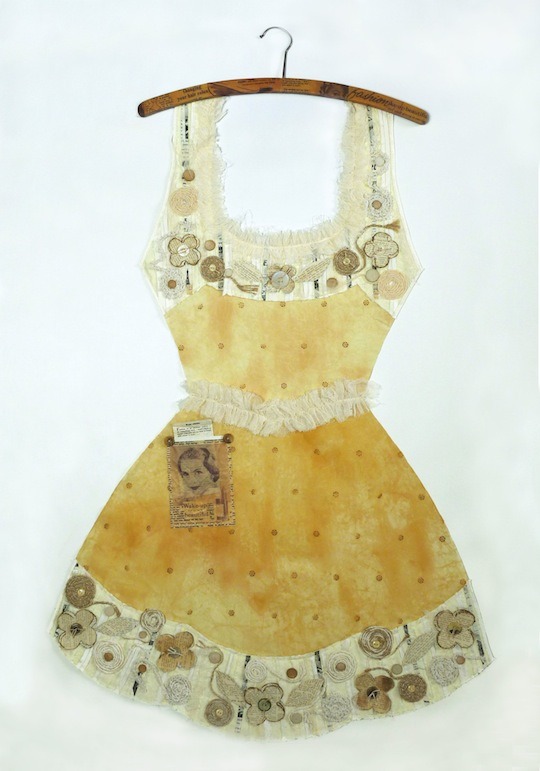
Do you give talks or run workshops or classes? If so where can readers find information about these?
I run workshops from “The Purple Thread Shed” – my studio near Edinburgh. Details of these are on my website www.aliferguson.co.uk. I am also happy to talk about my work and give workshops to textile groups and Guilds.
Where can readers see your work this year?
I have just started a new series of work and will be looking for exhibiting opportunities for that. I keep my website www.aliferguson.co.uk and Facebook page The Purple Thread Shed – Ali Ferguson up to date with what I am up to.
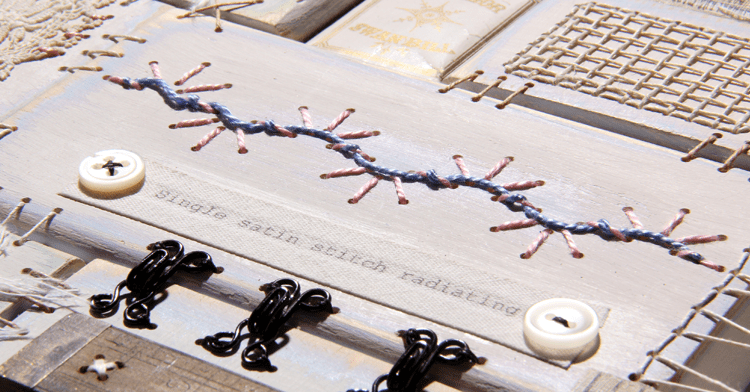
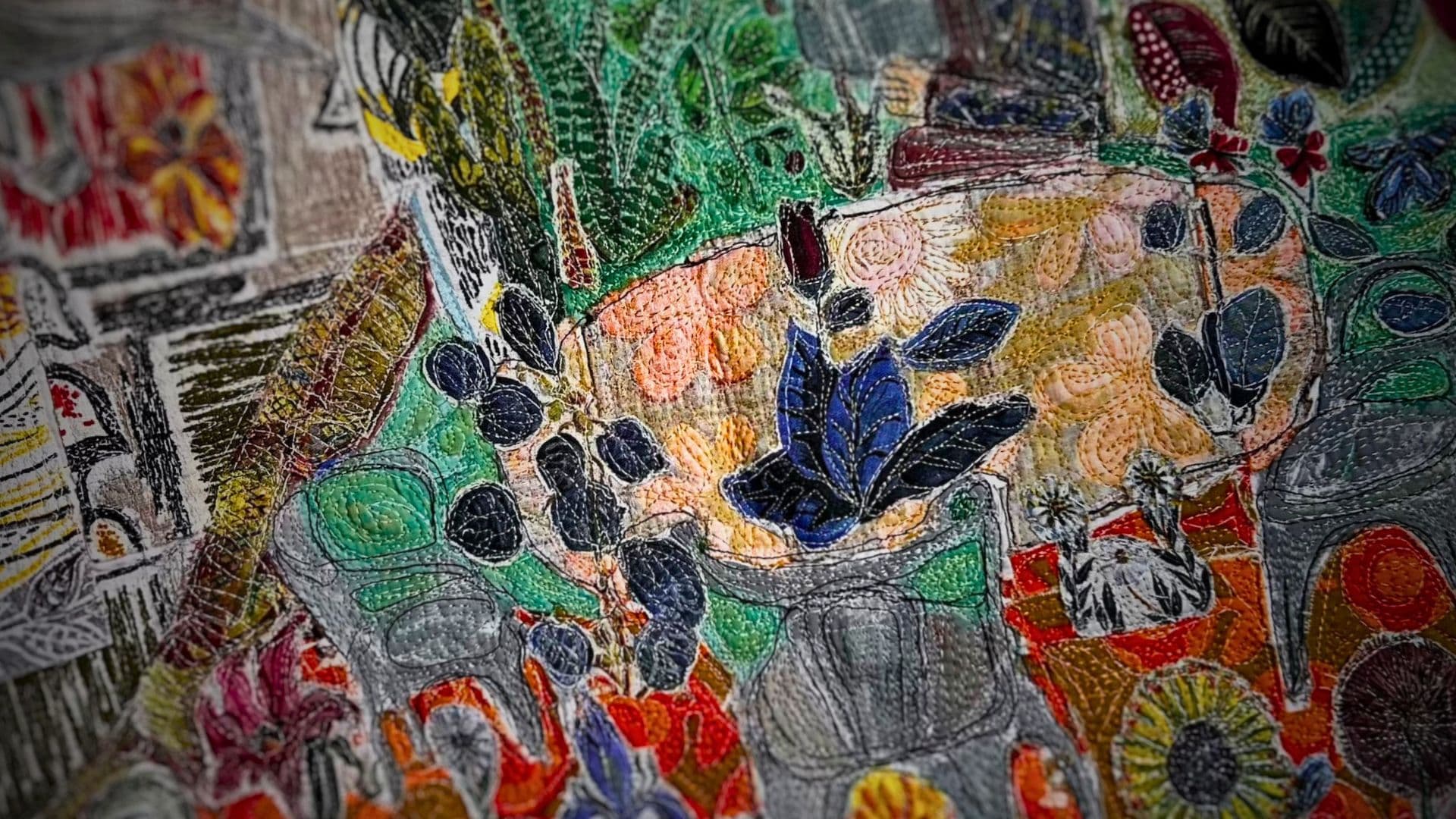
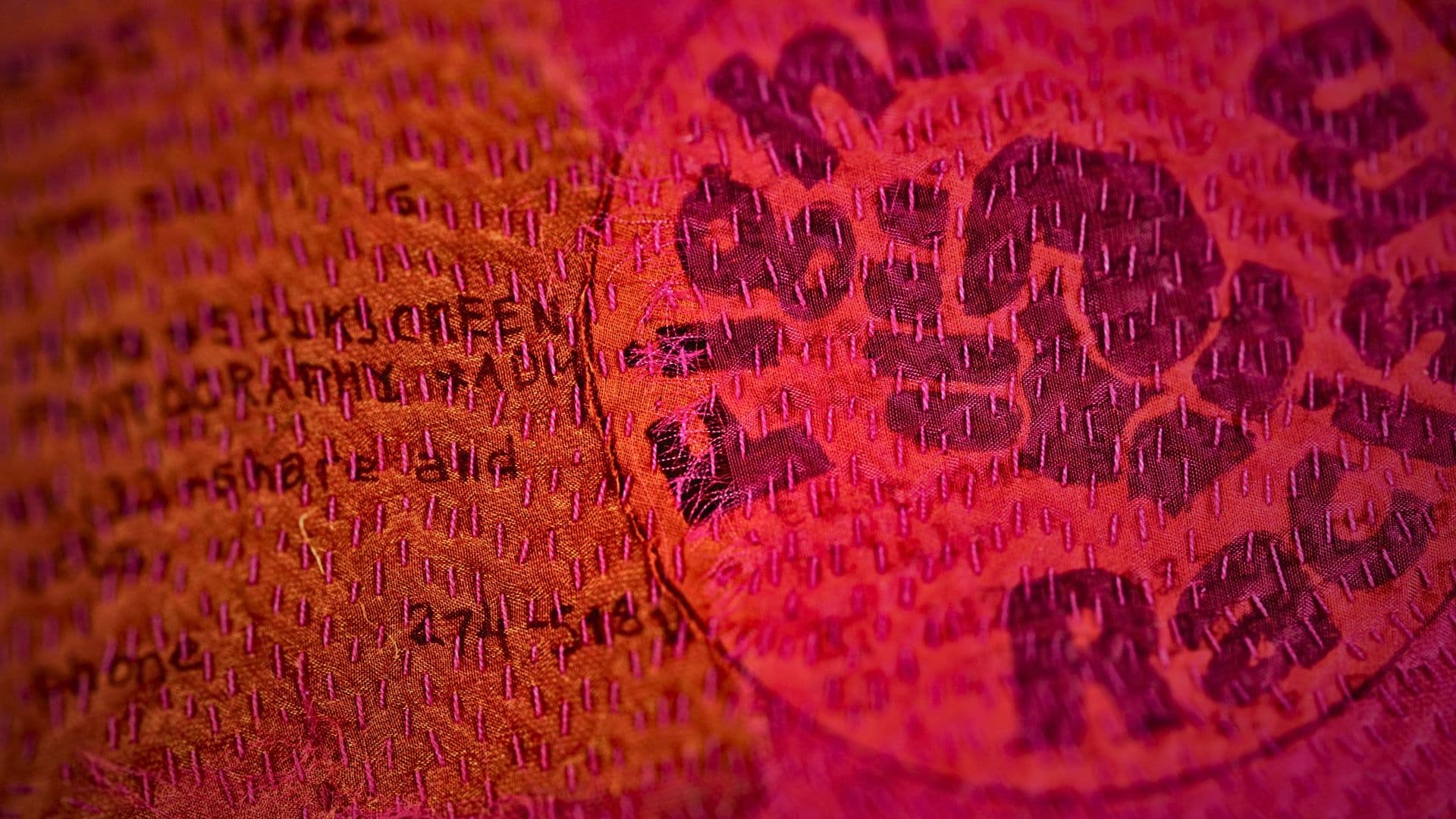
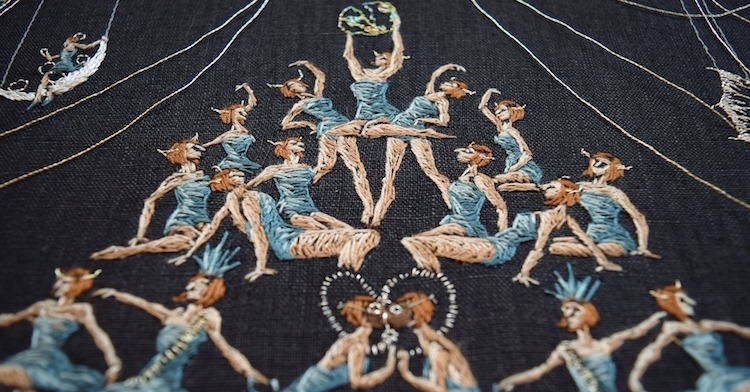
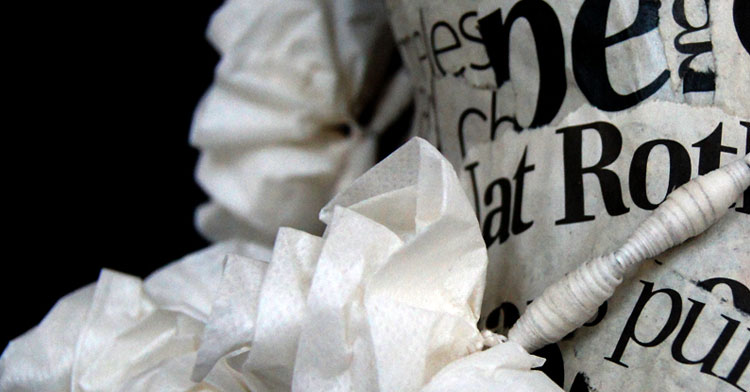
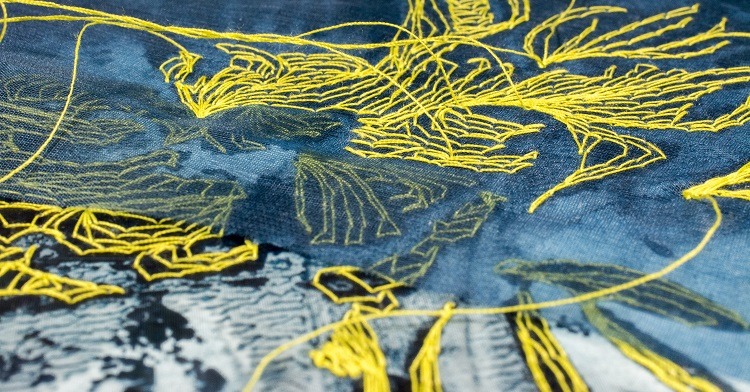
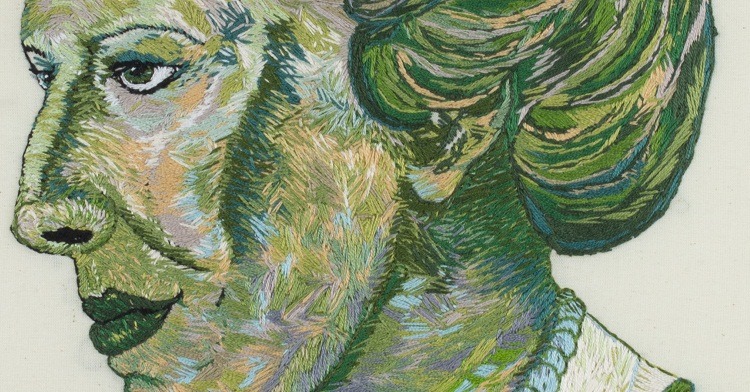
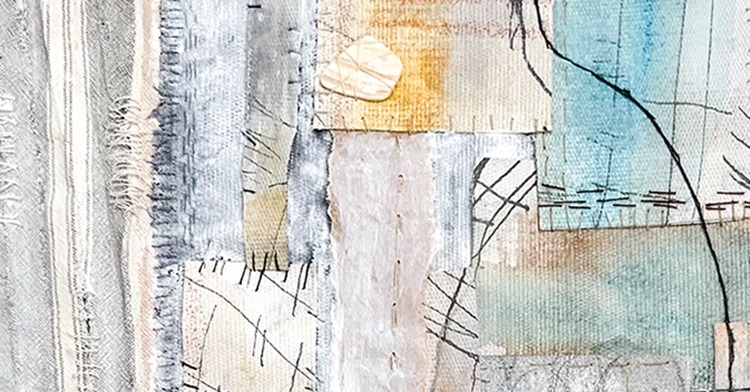
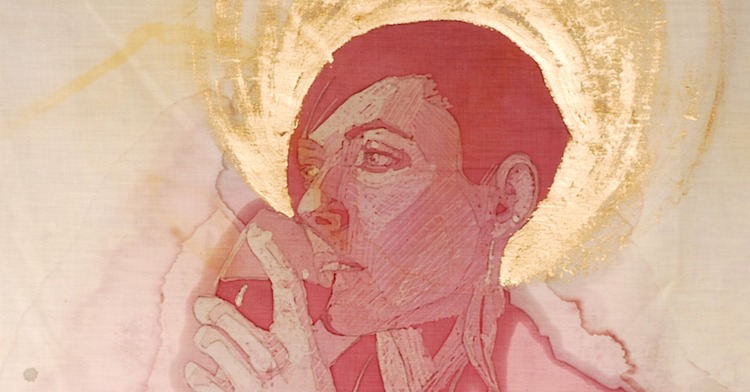
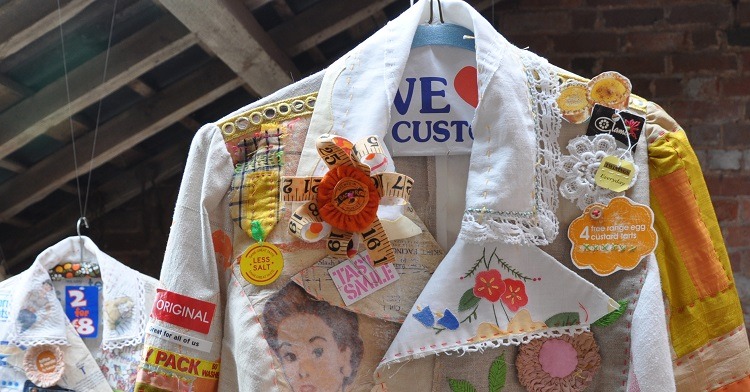
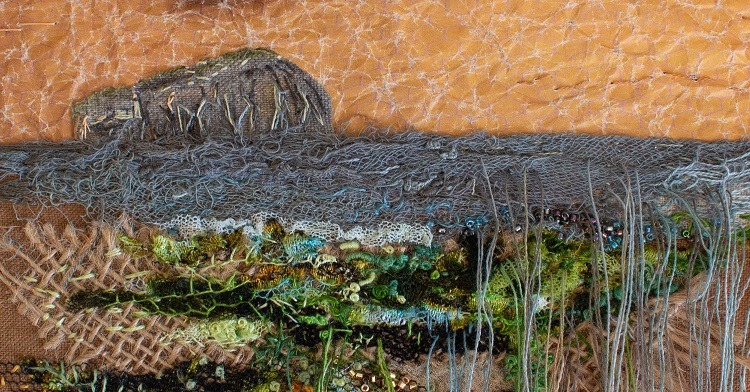
2 comments
Sue Lee
I’m currently enjoying, nay feasting, on a week long course with Ali – glad to have a news holiday and totally lose myself in exploring textiles, papers and threads “just to see where they take me” until my hands and thought and marks produce something meaningful. It’s exciting. It’s meaningful. It’s reality. And it’s cathartic. Ali is a wonderfully creative artist who inspires me to find beauty and charm in the old and everyday stuff of life and living. FANTASTIC Ali. Loving my experience !!
Amy
Very interesting to hear your story Ali. I’ve been on two of your courses and couldn’t reccommmend them highly enough!